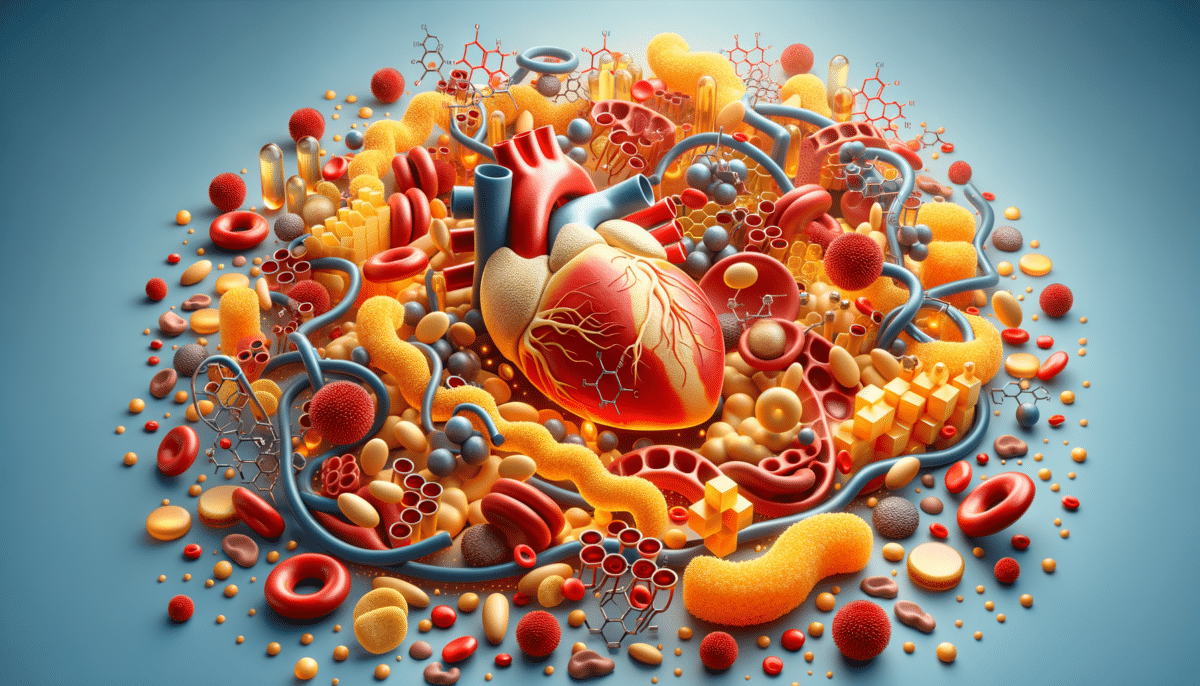What is Cholesterol?
Cholesterol is a waxy, fat-like substance found in every cell of the body. Although it often gets a bad reputation, cholesterol is essential for various bodily functions. It plays a vital role in the production of hormones, vitamin D, and substances that help digest foods. The liver naturally produces all the cholesterol the body needs, but it is also found in animal-based foods.
There are two main types of cholesterol: Low-Density Lipoprotein (LDL) and High-Density Lipoprotein (HDL). LDL is often referred to as “bad” cholesterol because high levels can lead to plaque buildup in arteries and result in heart disease. On the other hand, HDL is known as “good” cholesterol since it helps remove LDL from the arteries, transporting it back to the liver for processing and elimination.
Understanding the balance between LDL and HDL is crucial for maintaining cardiovascular health. While cholesterol is necessary for the body, an imbalance, particularly high levels of LDL, can increase the risk of heart disease and stroke. Therefore, regular monitoring and maintaining a healthy lifestyle are key to managing cholesterol levels effectively.
The Role of Diet in Cholesterol Levels
Diet plays a significant role in managing cholesterol levels. Consuming foods high in saturated fats and trans fats can increase LDL cholesterol, while foods rich in unsaturated fats can help improve HDL cholesterol levels. Here are some dietary considerations to keep in mind:
- Include plenty of fruits, vegetables, and whole grains in your diet.
- Opt for lean sources of protein, such as chicken, fish, and legumes.
- Limit intake of red meat and full-fat dairy products.
- Incorporate healthy fats, like those found in nuts, seeds, and olive oil.
- Avoid processed foods high in trans fats and added sugars.
Studies have shown that a diet rich in fiber can help reduce LDL cholesterol. Soluble fiber, found in foods like oats, beans, and certain fruits, can bind to cholesterol in the digestive system and remove it from the body. Additionally, plant sterols and stanols, naturally occurring substances in plants, have been shown to lower cholesterol by blocking its absorption in the intestines.
Adopting a heart-healthy diet not only helps manage cholesterol but also supports overall well-being. Making informed food choices is a proactive step towards maintaining a healthy lifestyle and reducing the risk of cardiovascular diseases.
Cholesterol and Physical Activity
Regular physical activity is another crucial factor in managing cholesterol levels. Exercise helps increase HDL cholesterol while reducing LDL cholesterol and triglycerides. Engaging in physical activities strengthens the heart and improves circulation, which can help prevent the buildup of plaque in the arteries.
Various forms of exercise can be beneficial, including:
- Aerobic exercises like walking, jogging, cycling, and swimming.
- Strength training exercises to build muscle and improve metabolism.
- Flexibility and balance exercises such as yoga and tai chi.
The American Heart Association recommends at least 150 minutes of moderate-intensity aerobic exercise or 75 minutes of vigorous exercise per week, along with muscle-strengthening activities on two or more days a week. Even small amounts of physical activity can have a positive impact on cholesterol levels and heart health.
Incorporating regular exercise into your routine can be as simple as taking brisk walks, using the stairs instead of the elevator, or engaging in a favorite sport. The key is consistency and finding activities that you enjoy, making it easier to stick with an active lifestyle.
Cholesterol and Genetics
While lifestyle choices significantly impact cholesterol levels, genetics also play a role. Familial hypercholesterolemia is a genetic condition that affects the body’s ability to manage cholesterol, leading to high levels of LDL cholesterol from a young age. This condition increases the risk of heart disease and requires careful management through lifestyle changes and, often, medication.
Understanding your family history can provide insights into your genetic predisposition to high cholesterol. If you have a family history of heart disease or high cholesterol, it’s essential to discuss this with your healthcare provider. They may recommend more frequent cholesterol screenings and personalized strategies to manage your levels effectively.
Genetics can influence how the body processes cholesterol, but it doesn’t mean individuals are powerless over their cholesterol levels. A combination of a healthy diet, regular exercise, and, if necessary, medication can help manage cholesterol effectively, even in those with a genetic predisposition.
Conclusion: Navigating Cholesterol Management
Cholesterol is an essential component of our bodies, but maintaining the right balance is crucial for health. Understanding the different types of cholesterol and their functions helps in making informed lifestyle choices. A heart-healthy diet, regular physical activity, and awareness of genetic factors all contribute to effective cholesterol management.
Regular check-ups and cholesterol screenings are vital tools in monitoring heart health. By taking proactive steps and working with healthcare professionals, individuals can manage their cholesterol levels and reduce the risk of cardiovascular diseases. Cholesterol management is a lifelong journey, and with the right knowledge and habits, it can lead to a healthier, more fulfilling life.
